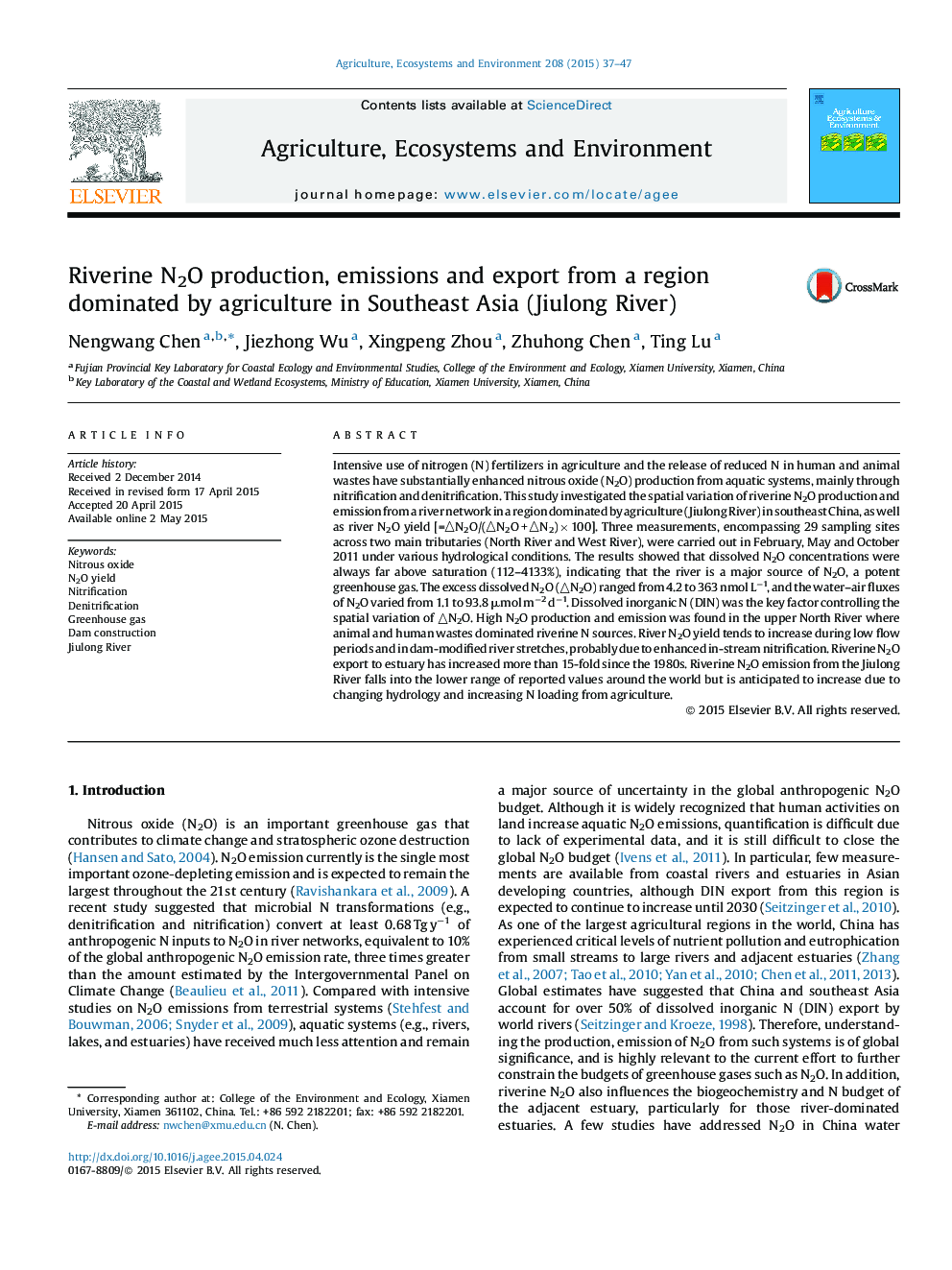| Article ID | Journal | Published Year | Pages | File Type |
|---|---|---|---|---|
| 2413716 | Agriculture, Ecosystems & Environment | 2015 | 11 Pages |
•Hot spots of N2O were found in river stretches dominated by animal/human wastes.•DIN concentration controlled the spatial variation in N2O production and emission.•N2O yield tended to increase in low flow periods and dam-modified river stretches.•Riverine N2O export to estuary increased 15-fold during the period 1985–2012.
Intensive use of nitrogen (N) fertilizers in agriculture and the release of reduced N in human and animal wastes have substantially enhanced nitrous oxide (N2O) production from aquatic systems, mainly through nitrification and denitrification. This study investigated the spatial variation of riverine N2O production and emission from a river network in a region dominated by agriculture (Jiulong River) in southeast China, as well as river N2O yield [=△N2O/(△N2O + △N2) × 100]. Three measurements, encompassing 29 sampling sites across two main tributaries (North River and West River), were carried out in February, May and October 2011 under various hydrological conditions. The results showed that dissolved N2O concentrations were always far above saturation (112–4133%), indicating that the river is a major source of N2O, a potent greenhouse gas. The excess dissolved N2O (△N2O) ranged from 4.2 to 363 nmol L−1, and the water–air fluxes of N2O varied from 1.1 to 93.8 μmol m−2 d−1. Dissolved inorganic N (DIN) was the key factor controlling the spatial variation of △N2O. High N2O production and emission was found in the upper North River where animal and human wastes dominated riverine N sources. River N2O yield tends to increase during low flow periods and in dam-modified river stretches, probably due to enhanced in-stream nitrification. Riverine N2O export to estuary has increased more than 15-fold since the 1980s. Riverine N2O emission from the Jiulong River falls into the lower range of reported values around the world but is anticipated to increase due to changing hydrology and increasing N loading from agriculture.
